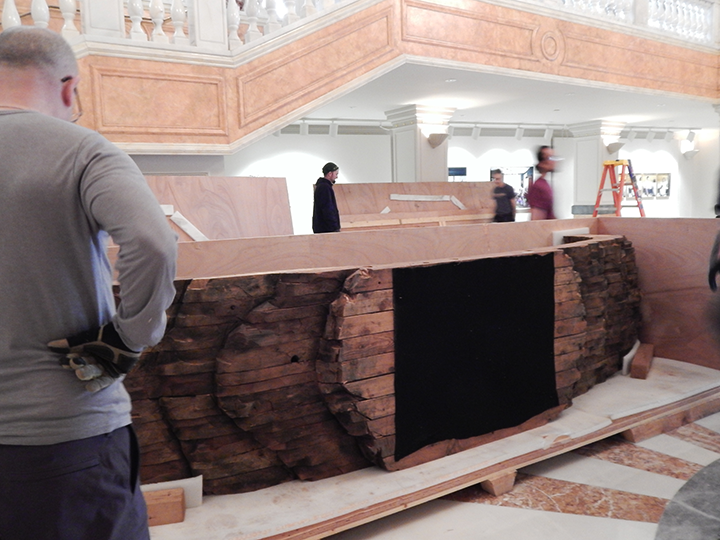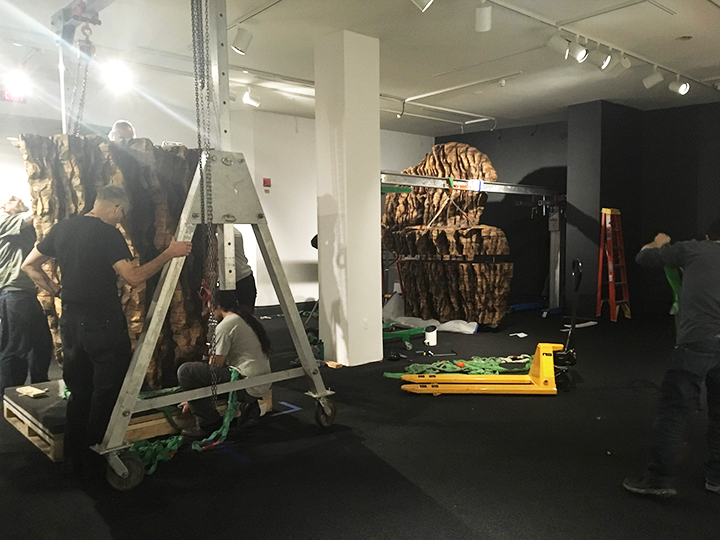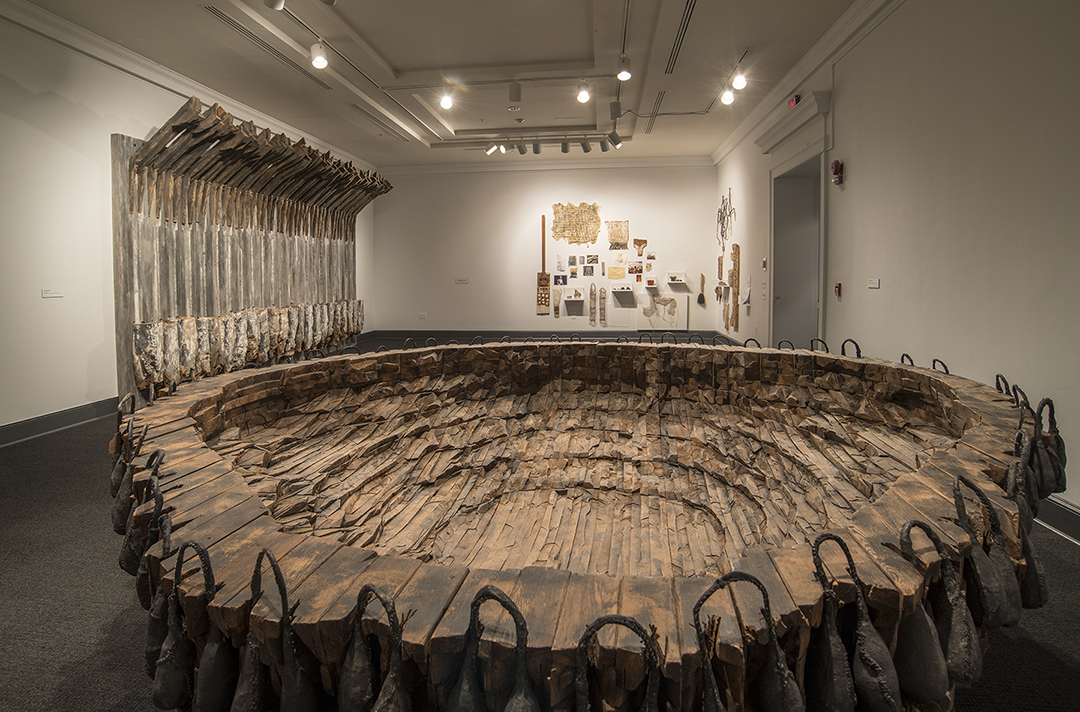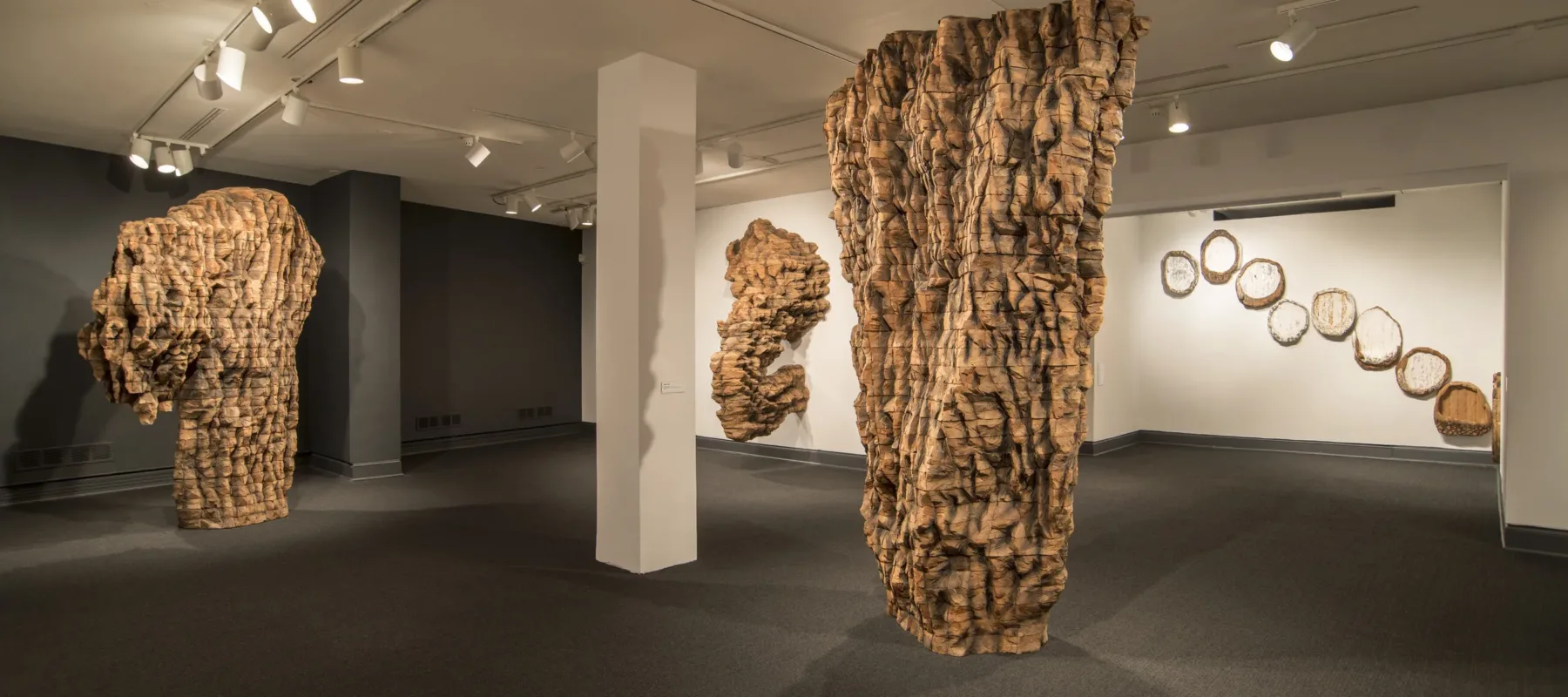Ursula von Rydingsvard: The Contour of Feeling presents the artist’s monumental cedar wood sculptures alongside newer works for the first time. The poetic and expressive works, which also use leather, linen, and other organic materials, reveal the process by which von Rydingsvard gives outward visual form to her innermost ideas and emotions.
Gallery guards and educators hear a frequent question from visitors to the museum’s Ursula von Rydingsvard exhibition: how did you get these sculptures into the building? Many of the 26 cedar forms tower close to the ceiling and weigh hundreds of pounds. In fact, the sculpture Krypta I (2014), stands almost 11 feet high and weighs about 2,500 pounds. A conversation with NMWA Registrar Catherine Bade revealed the heavy lifting that occurred behind the scenes to bring The Contour of Feeling to life.
Road Trip
Most of the exhibition’s sculptures were sent on three large trucks from von Rydingsvard’s studio in Brooklyn, New York, to Washington, D.C. Timed to accommodate the museum’s public hours, its busy event schedule, and downtown D.C. street traffic, they arrived in the middle of the night and were carefully moved into the museum several weeks before the exhibition was scheduled to open.

Building Blocks
Due to their monumental size, the sculptures arrived disassembled into large sections in crates, and von Rydingsvard’s studio assistants came to help put them back together. Von Rydingsvard also includes a precise system of marks on the pieces themselves—some that are still visible on the finished sculptures—that help the installation team navigate assembly.
It Takes a Village
A team of 17 people, including NMWA’s registrars and exhibition designer, the registrar from the Fabric Workshop and Museum (organizers of the exhibition), fine art handlers, von Rydingsvard’s studio assistants, and the artist herself, worked approximately 100 hours to get the exhibition ready to open.

Wide Load
The biggest challenge of the installation was working with oversized pieces that were too big to fit into NMWA’s normal gallery space. To fit the wide, bowl-shaped Ocean Floor (1996), one of the gallery walls had to be cut back and getting it into the building’s freight elevator was a true feat of engineering.

An Art and a Science
Although von Rydingsvard’s sculptures look tough, their cedar wood and graphite materials are malleable, and the works—like all artworks—must be transported extremely carefully. “Rigging heavy sculptures is both an art and science,” Bade said. “Riggers can spend hours setting up the rigging and strapping the artwork before they actually move to install a piece.” They consider safety concerns specific to each sculpture, calculate the best angle for approach to the installation site, and test different lifts before final placement.

